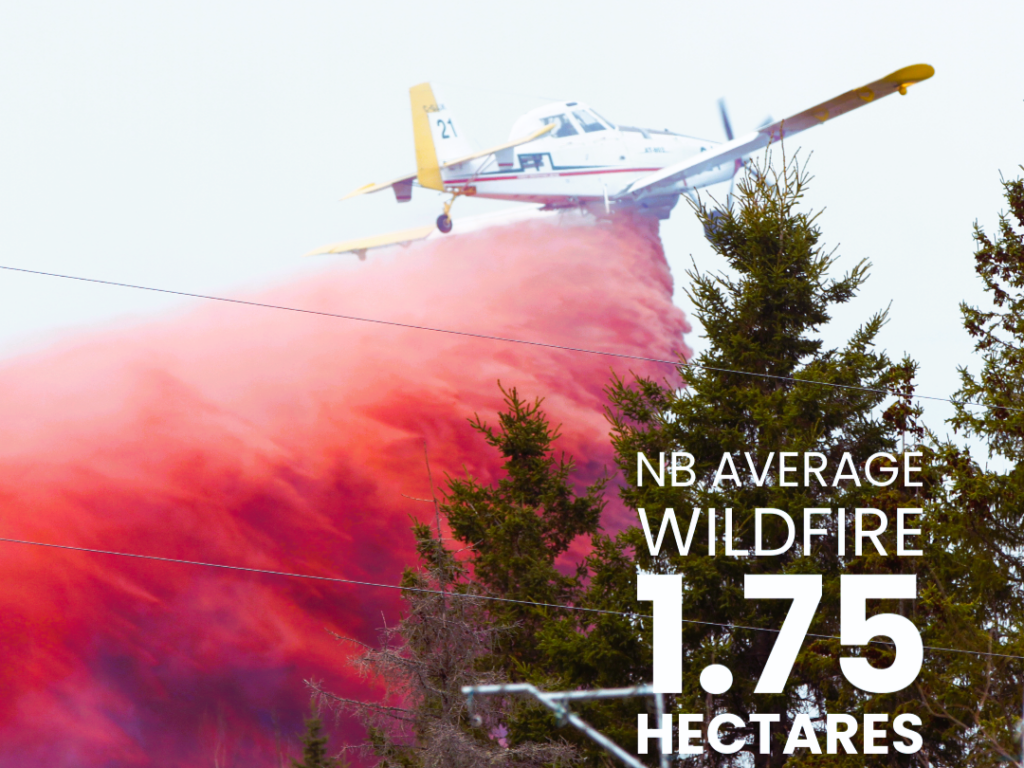Mitigating wildfires’ impact on climate change and air quality requires a multifaceted approach. Aerial forest management and fire suppression are critical to maintaining healthy forests and enhancing resilience, reducing fuel loads, preserving biodiversity, and preventing severe environmental and health impacts.
In 2023, Canada faced an extraordinary wildfire season. With fires 18% larger than the 10-year average, and over 18 million hectares of land burned, the air quality was affected as far away as Europe and China. We will explore how aerial forest management and fire suppression strategies maintain forest health, prevent pest infestation and defoliation, ensure a sustainable ecosystem, and contribute to preserving natural resources.
Aerial Vigilance Against Pest Infestation
Forests face a dual threat – pest infestation and defoliation, potentially harming their ability to act as efficient carbon sinks. However, aerial forest management is a powerful tool for proactively detecting and addressing these threats. Advanced technologies, such as drones and aircraft with remote sensing capabilities, allow for a bird’s-eye view of the forest’s health. This early detection enables targeted interventions to mitigate pests’ impact, preserving these ecosystems’ carbon-absorbing potential.
Preserving the Canopy’s Carbon-Capturing Capacity
Defoliation poses a significant threat to the health of forest canopies. Aerial forest management allows for precise and timely deployment of measures to combat defoliation. This includes the targeted application of eco-friendly pesticides and biological control methods. By preserving the integrity of the canopy, we ensure that forests continue their critical role as carbon sinks, capturing and storing substantial amounts of carbon dioxide.
Nipping Wildfires in the Bud
Wildfires have become a growing concern in the context of climate change, with their prevalence and severity increasing over time. Responding quickly to fires and managing forests from the air are essential strategies to prevent them from turning forests into net sources of greenhouse gas emissions. A fast and well-coordinated response to emerging wildfires is crucial to preserving the carbon-absorbing capacity of forests and maintaining their role as key components of our climate change mitigation strategy. The average size of a wildfire in New Brunswick is 1.75 hectares.
Preserving Forests for Future Generations
The beneficial relationship between aerial forest management and quick response fire suppression is clear. We can create a robust ecosystem that sequesters carbon over time by tackling issues such as pest infestation and the immediate danger of wildfires. This ensures the protection of our current carbon reserves and establishes the groundwork for sustainable and thriving forests that will benefit future generations.
Beyond Carbon Sequestration
Implementing aerial forest management and rapid initial response fire suppression strategies leads to added environmental benefits. By preserving forests, we contribute to biodiversity conservation, improve air and water quality, and reduce the risk of soil erosion. A holistic approach ensures that our efforts to combat climate change go beyond carbon sequestration, creating a balanced and resilient ecosystem.
As stewards of the environment, we must use innovative approaches to preserve the invaluable carbon-absorbing capabilities of our forests. Aerial forest management is a powerful tool in combating pest infestation and defoliation, which can be further enhanced by quick response fire suppression. Let’s continue to advocate for and invest in these strategies, as they form a formidable part of our fight against climate change.

